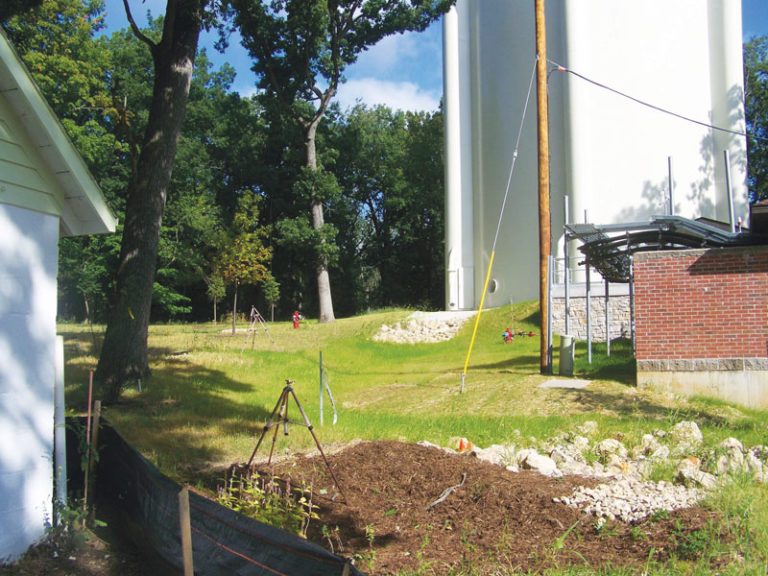
By Dan Tortorice
Friends of Lake View Hill Park
Nature works in cycles. Water falls to earth from the clouds, sinks into the earth or evaporates to rise, condenses and falls again as rain. Because of its elevation, Lake View Hill Park is a natural place to be part of another cycle — how a city stores and distributes water for use by its citizens. Madison has built a new water tower and pipe system on the hill.
The final part of that cycle is to ensure a future water supply by not overusing the water and perhaps even putting water back into the ground to recharge our aquifer.
Unlike cities such as Houston, Texas, Madison has a long history of preserving our wetlands to limit flooding and recharge our wells. The Northside is blessed with thousands of acres of preserved wetlands in Cherokee Marsh and Warner Park. The city has acted to protect Cherokee Marsh by building holding ponds along Wheeler Road to trap contaminants carried by storm sewers.
The Madison Water Utility, which operates the tower on our hill, contracted with Greener Valley Landscaping to construct several rain gardens near the base of the new tower. Over the course of a year, small rain gardens such as these can put thousands of gallons of water back into the earth.
Rain gardens are simply an area of ground that is lower than the surrounding area. The bottom of the area contains loose, sandy soil to let water percolate into the earth. Native plants with deep roots are planted at the bottom. Their roots help to make a pathway for water to move downward while their tops provide food for native insects and birds. Plants that need less water are planted toward the top.
Our gardens contain water-loving plants such as sky blue asters, brown fox sedge, great blue lobelia and spiderwort. The higher portions contain switch grass, oak sedge columbine, wild geraniums, little bluestem and many others. Like the rest of the park, these gardens will need to be maintained to prevent invasion from non-native species.
A mixture of native trees and shrubs surround the gardens. They include black oak, shagbark hickory, common witch hazel and American elderberry.
While these small rain gardens will not make a significant difference in our water supply, they are an important symbol of a commitment to work with natural cycles. And when included in all city planning for development and repeated by property owners everywhere, the impact could be substantial. Every rain barrel installed or rain garden built in a backyard can contribute to avoiding a catastrophe like Houston while preserving our ground water. Homeowners can learn more about building a rain garden by visiting the DNR website dnr.wi.gov/topic/Stormwater/raingarden.
In another nice gesture, the Madison Water Utility canceled the planned demolition of the old pump house on the tower grounds and allowed it to be used by the Friends of Lake View Hill Park as a tool storage shed. The Friends extend our thanks to them for this valuable contribution to our efforts.